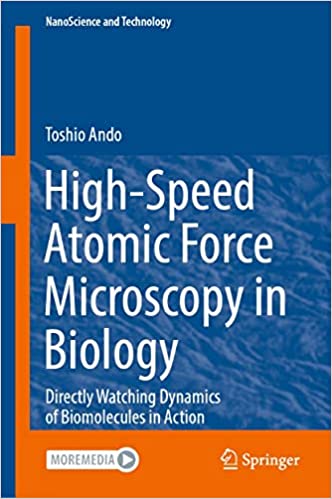B
book24h
Guest

English | 2022 | ISBN: 3662647834 | 327 pages | True PDF EPUB | 88.5 MB
This first book on high-speed atomic force microscopy (HS-AFM) is intended for students and biologists who want to use HS-AFM in their research. It provides straightforward explanations of the principle and techniques of AFM and HS-AFM. Numerous examples of HS-AFM studies on proteins demonstrate how to apply this new form of microscopy to specific biological problems. Several precautions for successful imaging and the preparation of cantilever tips and substrate surfaces will greatly benefit first-time users of HS-AFM. In turn, the instrumentation techniques detailed in Chapter 4 can be skipped, but will be useful for engineers and scientists who want to develop the next generation of high-speed scanning probe microscopes for biology.
The book is intended to facilitate the first-time use of this new technique, and to inspire students and researchers to tackle their own specific biological problems by directly observing dynamic events occurring in the nanoscopic world. Microscopy in biology has recently entered a new era with the advent of high-speed atomic force microscopy (HS-AFM). Unlike optical microscopy, electron microscopy, and conventional slow AFM, it allows us to directly observe biological molecules in physiological environments. Molecular "movies" created using HS-AFM can directly reveal how molecules behave and operate, without the need for subsequent complex analyses and roundabout interpretations. It also allows us to directly monitor morphological change in live cells, and dynamic molecular events occurring on the surfaces of living bacteria and intracellular organelles. As HS-AFM instruments were recently commercialized, in the near future HS-AFM is expected to become a common tool in biology, and will enhance and accelerate our understanding of biological phenomena.
Rapidgator
NitroFlare
Uploadgig is Free Download Link

